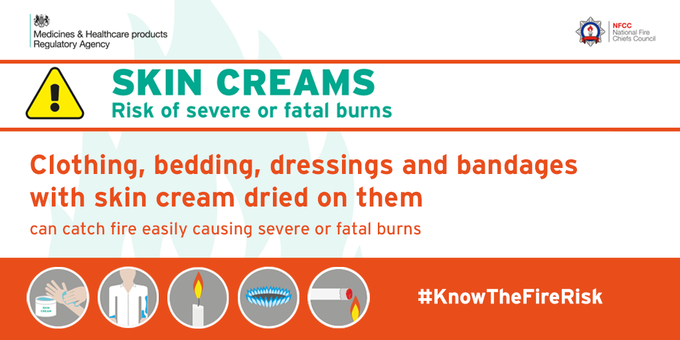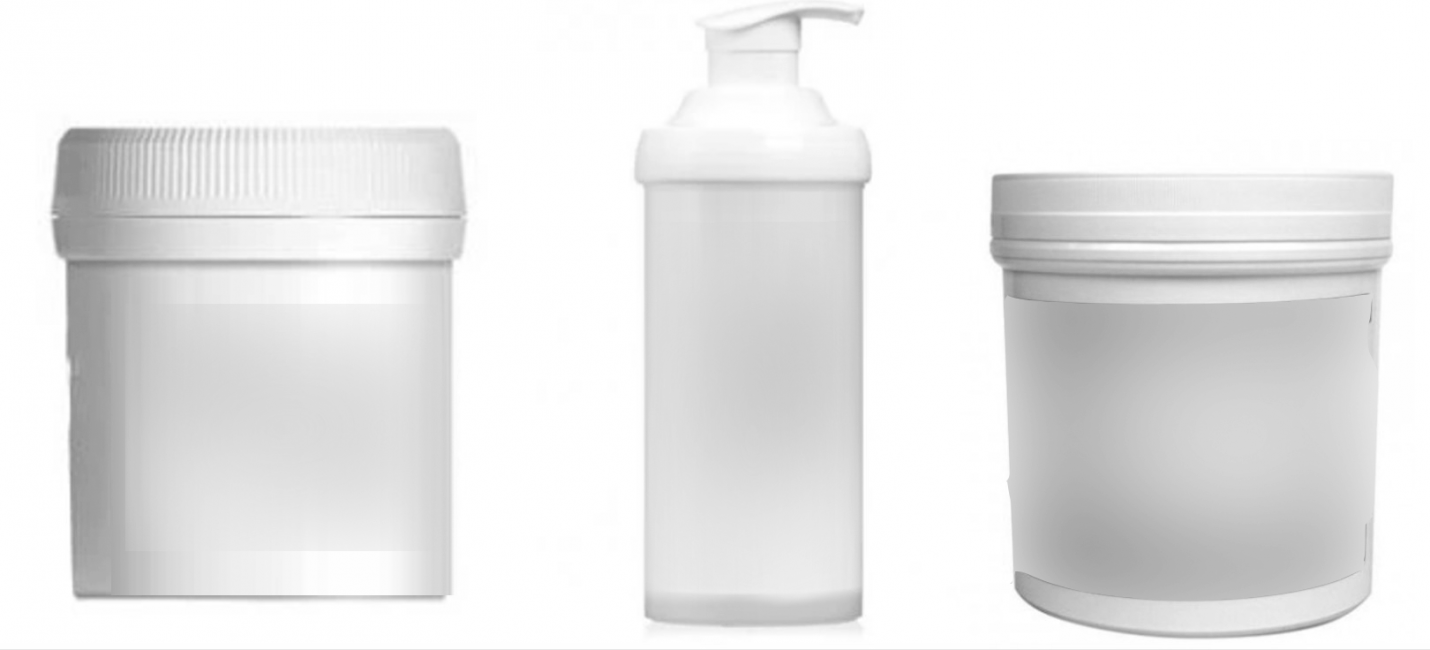What is an emollient product?
An emollient product may be a moisturising cream applied to the surface of the skin that softens dry skin, keeps it supple and prevents further moisture loss.
Emollient products come in two forms; those that contain liquid paraffin or soft white paraffin as key ingredients. And products containing non-paraffin-based materials.
Cosmetic or medicinal liquid paraffin should not be confused with the liquid paraffin used as a fuel, (also called kerosene). There are a range of medical emollient products on the UK market, some prescribed by the NHS.
However, new fire safety advice, based on scientific evidence, confirms that non-paraffin emollients pose the same fire risk as those containing paraffin.
People who use emollient skin products must be extra careful when near naked flames or other potential ignition sources, (such as when lighting a cigarette or near halogen heaters).
Previous advice had been to wash clothes at a suitably high temperatures, however new scientific research has shown that washing does not remove the risk.
Why are emollient creams a fire risk?
People who smoke and use emollients creams are at greater risk of setting themselves on fire, as the flammable residue from the cream soaks into their clothing, bedding, or dressings.
Following a number of fatal fires in the UK, Anglia Ruskin University, De Montfort University and the National Fire Chiefs Council, (NFCC), Emollient Group confirmed that emollient creams that contained both paraffin and non-paraffin ingredients can be absorbed into clothing and react to an exposed naked flame or heat source, causing the clothing to ignite.
At De Montfort University analytical Forensic Chemistry labs, flammability tests have shown fabrics contaminated with both paraffin and non-paraffin emollients ignite much quicker than uncontaminated fabrics.
The time to ignition can be just a few seconds which means if someone accidentally sets themselves on fire, their chances of extinguishing the fire or escaping are greatly reduced.
The Medicines and Healthcare products Regulatory Agency (MHRA) has joined with the NFCC and health charities in a campaign to raise awareness of the emollient products fire risk and the precautions that need to be taken by users of such skin products.
Emollient products can be found as creams, ointments, sprays, and body wash formulations used by millions of people every day to manage dry, skin, eczema, psoriasis and itchy skin.
Some emollients may contain paraffin, shea or cocoa butter, beeswax, lanolin, nut oil or mineral oils which may potentially leave a flammable residue.
Commonly prescribed and used by the NHS, (available in chemists and supermarkets), emollients are not flammable in themselves. The risk occurs when they absorb into fabrics and are then exposed to naked flames or heat sources resulting in a fire that burns quickly and intensely and can cause serious injury or death.
Scientific testing has confirmed that the flammability increases each time the fabric is contaminated with emollient and the risk is greater when applied over large parts of the body.
Repeated washing of clothing, dressings and bedding at any temperature does not remove the fire risk.
Over 60’s who smoke and have reduced mobility are those most at risk and the Fire Service is urging them, their families and carers to be alert to the inherent fire risk and updated fire safety advice.
In England alone, (in the last decade), 56 fire deaths were confirmed as involving emollient creams. In Scotland to, six of the 44 fire deaths reported in 2018/19 involved emollient products.
County Durham and Darlington Fire and Rescue Service have the following advice for people who use emollient products to:
- We would like those that use emollient creams and products and their carers to understand the fire risk associated with the build-up of residue on dressings, clothing and bedding and take positive action to minimise the risk.
- We strongly encourage anyone who has any concerns or issues with emollient products should speak to a healthcare professional or your pharmacist in the first instance.
- If an emollient products user is a smoker, they must take extreme care from the risk of their clothing, dressings or bedding coming close to an open flame such as a lighter or a match.
- Emollient product users should avoid being in close contact to halogen heaters, fireplaces, and cookers if there is any risk that their clothing or dressings may be contaminated with emollient products.


